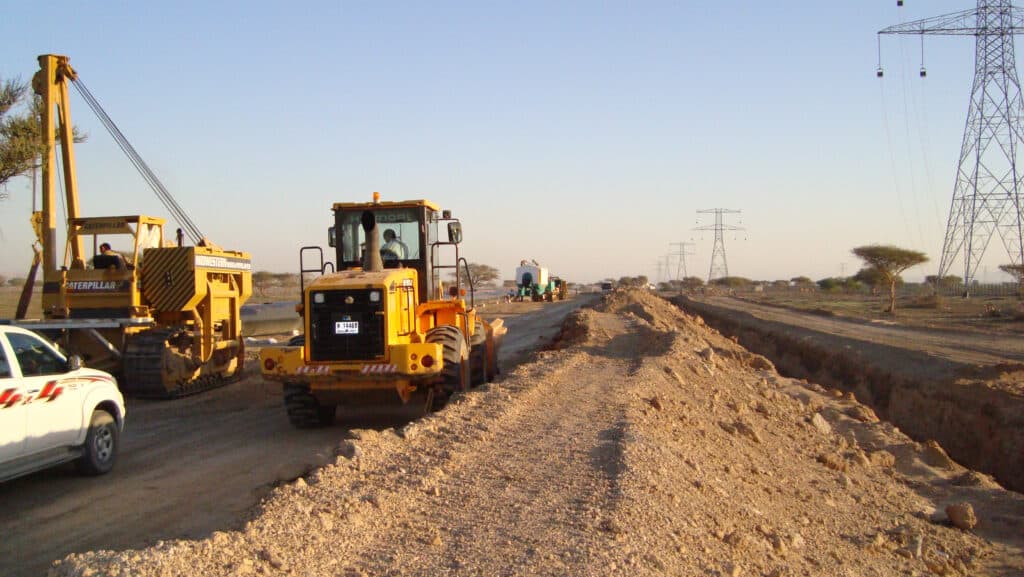
Contractors’ Equipment Insurance – who needs it, when you need it, what it costs, and more, coming right up.
Contractors’ equipment falls under the category of inland marine insurance, which I did a video on a while ago, and if you’d like you can take a look at that here: Inland Marine Insurance Explained!
You may wonder why the policy is called inland marine so let me take a second to explain that.
Marine insurance covers property that moves – whether that’s (goods being shipped) over the ocean which we call ocean cargo marine insurance, or (property being moved on a truck), or moving on its own which we call inland marine insurance.
Sometimes it’s also called a floater policy or an equipment floater – again because the equipment “floats” from one place to another.
Regarding contractor’s equipment, we’re talking about a broad category of insurance that can insure everything from the (tools and equipment carried on a plum ber’s or electrician’s truck) to a large multi-million dollar (excavator used by a land improvement contractor).
For many trade contractors, there is some (confusion) on how to ensure the tools and equipment on their trucks.
The business personal property limit on your business owner’s policy does not cover the equipment in your trucks, especially when you’re out on the road and at jobs.
Your tools are also not covered by your business auto policy.
So, that means you need specialized coverage for them, and that’s where the contractors’ equipment floater comes in.
For many artisan contractors, this can be added to your contractors’ package or BOP policy. For larger contractors with a large schedule of equipment, it’s usually done on a separate policy.
So what should you be insured on a floater or inland marine policy?
In most cases, we suggest that (larger pieces of equipment) over $1,500 in value be scheduled and insured, and all smaller (hand and power tools) can be insured on a blanket limit of coverage.
Scheduled coverage means you have specific coverage on specific items, and I’ll talk more about that in a minute.
Blanket coverage gives you a limit of coverage, to cover all of the miscellaneous tools and equipment you have.
The thinking is that you’re not going to file a claim if you lose a pair of plyers, but if your truck is stolen and never recovered you have say $15,000 of insurance to cover all the players, screwdrivers, hammers, drills, nail guns, etc. that were on that truck.
Now when you get into large expensive items such as backhoes, excavators, tractors, loaders, and other specialized valuable equipment that is scheduled, you’ll provide the insurance company the year make model, serial number, and value of each item to be scheduled.
And that brings me to an important talking point around value.
On contractors’ equipment, there are two valuation clauses that can be used – replacement cost and actual cash value which I’ll explain.
For newer equipment – usually, items that are no more than 5 to 7 years old, most insurers will give you replacement cost valuation – meaning new for old.
If you bought an excavator for $450,000 and insured it for that, and it’s 3 years old and stolen from a job site, you’ll get $450,000.
Say that same stolen excavator is 10 years old, you’ll get actual cash value or ACV in the claim settlement and that means the cost new less depreciation.
Depending on the equipment and how it depreciates your settlement may only be $250,000.
That’s why updating your values every year on your scheduled equipment makes sense so you’re not overcharged.
Why Do You Need Coverage on Contractors’ Equipment?
Claims do happen and you’ve got a lot of money invested in your equipment. Equipment is vulnerable to theft and vandalism at job sites, and in transit, the risk of overturn or damage does happen.
I’ve settled a lot of equipment claims in my career so I know they do happen.
Further, if you’ve financed your equipment then your bank, leasing company, or finance company is going to require that you have insurance.
What about Equipment I Rent or Borrow?
In most contractors’ equipment policies, insurers will provide a sub-limit of coverage for equipment rented or borrowed.
Just make sure that those limits fit your need and look for any limitations per piece of equipment.
What Does Contractors’ Equipment Insurance Cost?
Contractors’ equipment insurance is based on a number of different factors and there is no set rating or the premium value used across the insurance industry.
The following factors are used in determining insurance costs: the type of equipment insured, the values, age of equipment, protection of property in storage and at job sites, deductibles, loss history, etc.
Have other questions I didn’t cover here? Feel free to drop me an email, or give me a call.
Thanks

